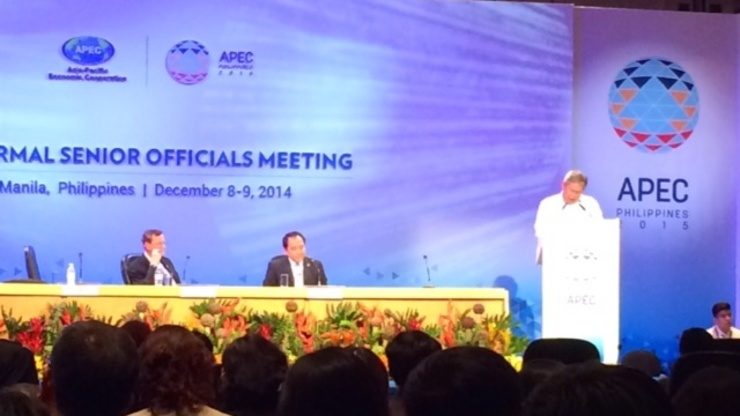SUMMARY
This is AI generated summarization, which may have errors. For context, always refer to the full article.

MANILA, Philippines – Experts gathered at the APEC Informal Seniors’ Meeting (ISOM) discussed the importance of creating contingency measures as the threat of climate change grows.
On Monday, December 8, panelists agreed on the necessity of innovative and sustainable redundancy measures, especially as a more integrated region becomes more susceptible to disasters and natural calamities.
Professor Noubaki Hamaguchi of the Research Institute for Economic and Business Administration (RIEB), emphasized that disasters are “no longer a managerial problem, but a regional and international problem.”
Hamguchi said that while supply chain has “been internationalized in East Asia” and “intermediate goods trade has been expanded enormously, increasing complexity and including more countries,” this also becomes a vulnerability when disasters hit one nation. Because of this, resiliency is all the more important, he said.
On the individual level, Hamaguchi said each company needs a business continuity plan and invest more in the safety and protection of the workplace.
“The creation of redundancy is required like multiple sourcing and back up production facilities,” he said. “Sharing knowledge of best practices and innovative ideas is necessary.”
Hamaguchi emphasized that local and national measures – in addition to increased international and regional cooperation – are crucial.
Jose Ma Lorenzo Tan, president of the World Wildlife Fund-Philippines agreed, saying that “to make a global impact that is positive and sustainable, this shift must go beyond the silos of SMEs.”
“Redundancy must be in our tool kit,” he said. “It is time to reinvent, retool and reinvest.”
Albay Governor Joey Salceda, who was expected to speak at the panel, was unable to make it due to the threat of Typhoon Ruby to his province. The inaugural meeting, which was originally scheduled to be held at Legazpi City in Albay, was moved to Manila due to Typhoon Ruby, which was downgraded to a tropical storm Monday.
International effort
On the local and national level, Hamaguchi mentioned the trend of using natural disaster risk evaluation as an important location choice factor.
He said the Area Business Continuity Plan and Management, promoted by the Japan International Cooperation Agency (JICA) is also a good tool as it updates concerted efforts of local stakeholders to provide information on enhancing the resiliency of businesses, protecting jobs and increasing the advantages of localities.
“The resiliency of supply chain and providing resiliency to the global supply chain is very important to a local community in order to attract jobs and encourage more investments, not just to protect lives but also to provide jobs and security,” he said.
“This is not only about constructing good infrastructure, it is very important to make people in the local area united so as to make the local community more resilient and more quickly responsive to any unexpected event like a typhoon or tsunami.”
Tan, on the other hand, recommended the decentralization of cities to spread resources and decrease vulnerability of supply chains. “Wherever possible, populations and technologies on which we depend must be diffused.”
Hamaguchi pushed for the promotion of scientific researches to generate information on hazard risks. He said this would help form guidelines to avoid unorganized development that may increase environmental vulnerability, and mechanisms for risk monitoring and sharing information.
Other recommendations for business continuity were the following:
- Quick visa issuance for rehabilitation personnel;
- Speedy custom clearance of capital goods for replacement;
- Subsidy and credit for “creative reconstruction” of damaged areas; and
- Insurance of economic losses like a reinsurance mechanism to transfer a part of risks to investors.
“Disasters can be avoided. Expenditures, no matter how high, can be faced and financed. The point here is we should not look at it as a punishment but a tremendous opportunity. We face a new era,” Tan said. – Rappler.com
Add a comment
How does this make you feel?
There are no comments yet. Add your comment to start the conversation.